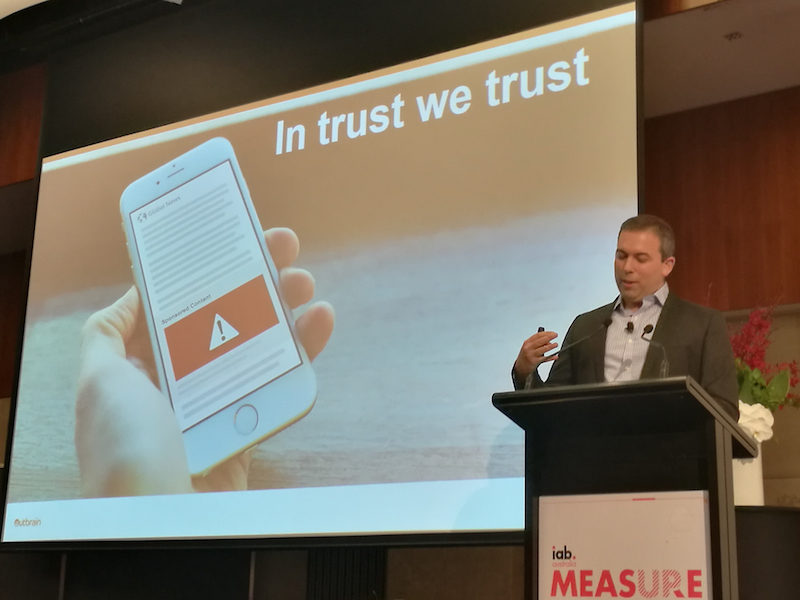Pay by the click and only advertise on reputable sites to beat ad fraud, Outbrain founder tells marketers
Working with reputable publishers and choosing cost per click advertising are the answers to advertisers’ brand safety fears and advertising fraud concerns, Outbrain founder Yaron Galai has told Mumbrella.
“I feel a lot of brands are just stuck with the inertia of what they used to measure with television where you had no idea what the user interaction was and it didn’t really matter,” he told Mumbrella ahead of speaking at the IAB Measure Up conference in Sydney this week.

Outbrain CEO and founder, Yaron Galai, speaking at yesterday’s IAB Measure Up conference
Outbrain’s business model focuses on embedding units on news sites where brands and other publishers can pay to promote their content.


How much is Yaron paying for this neatly slotted bit of PR. Outbrain is not the answer to ad fraud, nor is cpc vs cpm. Outbrain has its own set of issues. Rich.
Hi Lol,
We don’t accept payment for news coverage. As I suspect you are aware.
Tim – Mumbrella
A rhetorical question Tim – come on!
CPC??? CPC?? For F*ck Sake….The digital world needs to move away from clicks as a metric in order to flourish.. CPC is a metric for performance advertising and only works for publishers who can throw vast amounts of inventory at a campaign.
For digital media to thrive it has to attract brand money and therefore needs to be talking about brand uplift metrics.
… and BTW, has anyone seen the types of content that Outbrain is now “recommending”….
Too bad Outbrain can’t control what publishers are being used, most of the content it promotes is straight clickbait.
Ad-fraud is bad for advertising, but so is Clickbait crap, like Outbrain.
Yes I know as you know I know
But point sort of stands I think
It’s very PR in the context of what is going on – in my view of course
Ooh that IP thing you do is a bit creepy btw
Please no outing today
Thanks
Jeremy
I agree, it is very creepy. Either respect users anonymity or don’t offer it as an option.
http://www.tunnelbear.com 🙂
This guy has no idea what he’s talking about.
Click fraud is rampant in our industry and the second someone starts measuring OutBrain their business model will be shot to bits.
1. Clicks are a shite determination of customer engagement
2. 45 cent CPC’s. Just no.
3. When you look at traffic from OutBrain on your website, the average time on site is less then 10 seconds.
Gee, how are you measuring average time on site? If you’re using Google or Adobe Analytics, that number is meaningless. All bounces (single page visits) get zero. Doesn’t mean they didn’t read the content.
Actually @Steve, to be fair to Tim, I know the IP thing is there (you clearly do too) and he didn’t out me at all, I outed me out of my own sense of paranoia. So not really on Tim or Mumbrella. Not always but they mostly do respect anonymous. And who is anonymous on the web anyway?
Regards
Steve McQueen
I am looking for interested parties to join me in a new click farm business… who’s in?
Outbrain lecturing the industry on fake news and fraud is a tad rich …
@Keith
That will work
Suggested business names:
Click Cottage Australia
Clickhouse Rules
Gourmet Click Farmer ( my fav)
Surfing the Clicks
Lyndsey Milans Clicks of Australia
Destination Clicks Down Under
I like ” Click,Click Boom!’
Huh?
My take-out was that you go buy some cheap-shit lowest possible CPM sites – invariably of dubious quality unless you really want a Russian bride – and just focus on how low the CPC is?
Basically, he’s saying click counts are more important than brand safety. I’m not buying it.